Introduction to Early Testing - The BetterQA Approach
In the evolving landscape of software development, the question often arises: When should early testing activities begin? From our company’s perspective, the answer is clear and resounding: as soon as possible in the development lifecycle.
In this article, we explore the BetterQA approach to performing early testing on a software project through our QA team’s vast experience in harnessing its advantages, overcoming challenges, and implementing the best practices to ensure a well-functioning product.
What is Early Testing?
Early testing, a fundamental approach in software development, involves commencing testing activities at the inception of the Software Development Life Cycle (SDLC), far beyond simply commencing tests after code is written or during the design phase. It signifies the proactive initiation of testing from the very outset of the development process, even as early as the requirement gathering and design phases. This practice ensures that potential issues are identified and addressed at their nascent stages, fostering a more comprehensive and robust software development process.
Why Emphasize Early Testing during SDLC?
Starting testing early in the SDLC offers numerous advantages:
- Early Bug Detection: It helps capture and eliminate defects right from the early stages, reducing the overall defect count and rework costs.
- Quality Assurance: An early start ensures a higher likelihood of delivering a quality product. By addressing potential issues at the onset, the end product’s robustness is significantly enhanced.3.
- Resource Efficiency: Early testing allows for the efficient distribution of development and testing resources, ensuring that no phase is overloaded and every aspect gets the attention it deserves.4.
- Informed Decision-Making: The management team can make timely business decisions based on the early detection of critical bugs or vulnerabilities.
- Adaptability to Different Models: Although it’s ideally suited for the Waterfall model, with slight adjustments, early testing can also fit into Agile/Scrum models.
- Code Stabilization: Helps the Development Team stabilize the code early on in the development process.
- Risk Minimization: By identifying critical bugs and vulnerabilities early on, the risks associated with late-stage bug fixes are reduced.
Principles of Early Testing
For every software, system, or product release, well-defined methodologies and strategies govern the testing principles. The foundational questions like “What is Testing?”, “Why Testing?”, “What to Test?”, and “How to Test?” are integral to understanding the significance of early testing.
Challenges
While early testing offers numerous benefits, it’s essential to understand the potential challenges:
- Adaptation to Agile/Scrum: Early testing might require adjustments to fit into Agile or Scrum models seamlessly.
- Potential for Reduced Innovation: The Development Team may focus too much on bug fixes and less on innovation.
Implementing Early Testing: Best Practices
Adopting Early Testing necessitates a structured approach:
- Comprehensive Understanding: Grasping the core objectives and nuances of testing is crucial.
- Emphasizing Testing’s Necessity: Recognizing the integral role of testing in ensuring product robustness.
- Strategic Testing Focus: Identifying pivotal areas and components that require meticulous evaluation.
- Adopting Effective Methodologies: Employing the right tools, frameworks, and strategies ensures thorough testing.
At BetterQA, our experience has underscored the significance of these principles, allowing us to refine our methodologies and drive excellence in our testing endeavors.
The BetterQA team approach for Early Testing
As a concrete example from one of our projects, whenever a new feature needs to be implemented, testing starts as early as the requirements-gathering phase. Our testers review the new feature, and first and foremost, they are looking for any dependencies that the new module might have with previous ones, challenging the potential solutions that come from the development team. Asking as many questions raises the awareness of all stakeholders, resulting in better solutions from both the functional and technical sides.
Even more so, our QA team participates in refinement meetings, again raising their hand for any ambiguity in the acceptance criteria written so far. We want to ensure that everything is well-documented and that there is no place for misinterpretation. Having these refinement meetings with all stakeholders (QA team, Dev team, PM, PO, Tech Lead, UX/Design team) helps us stay in the loop and be on the same page, avoiding misinterpretations.
Once available, QA reviews the design. We’re looking for any potential UX improvements or misuse of existing components (in case of reusability). What we want to achieve is that users get the smoothest flow possible while ensuring that previous modules/components are properly used, and there is no weird customization that would add extra effort on top.
"The QA services are essential since the early stages"
Finally, once the documentation and design are up to date and approved, our testers start to create test cases, ensuring 100% coverage of the future implementation. For the final phase, after development finishes the first round of implementation, our QA team starts to execute the scenarios and raise any issues found based on the test cases previously written.
As you can see, Quality Assurance is a team effort, and all stakeholders should take ownership of this deliverable. Including your testers as early as possible in the SDLC process can be beneficial, as testers often have an inclination for attention to detail, and due to their day-to-day job, they have the most contact with the application under discussion, enabling them to provide details that could otherwise be overlooked.
Conclusion
In the realm of software testing, timing is everything. Starting early can differentiate between a good product and a great one. At BetterQA, we’re dedicated to making your vision a reality, ensuring that every software we touch not only meets but exceeds expectations.
So, if you’re looking for a partner who believes in the power of early testing and is committed to delivering excellence, BQA is the name you can trust. Together, let’s bring your vision to life, one test at a time!
Stay Updated with the Latest in QA
The world of software testing and quality assurance is ever-evolving. To stay abreast of the latest methodologies, tools, and best practices, bookmark our blog. We’re committed to providing in-depth insights, expert opinions, and trend analysis that can help you refine your software quality processes.
Delve deeper into a range of specialized services we offer, tailored to meet the diverse needs of modern businesses. As well, hear what our clients have to say about us on Clutch!

